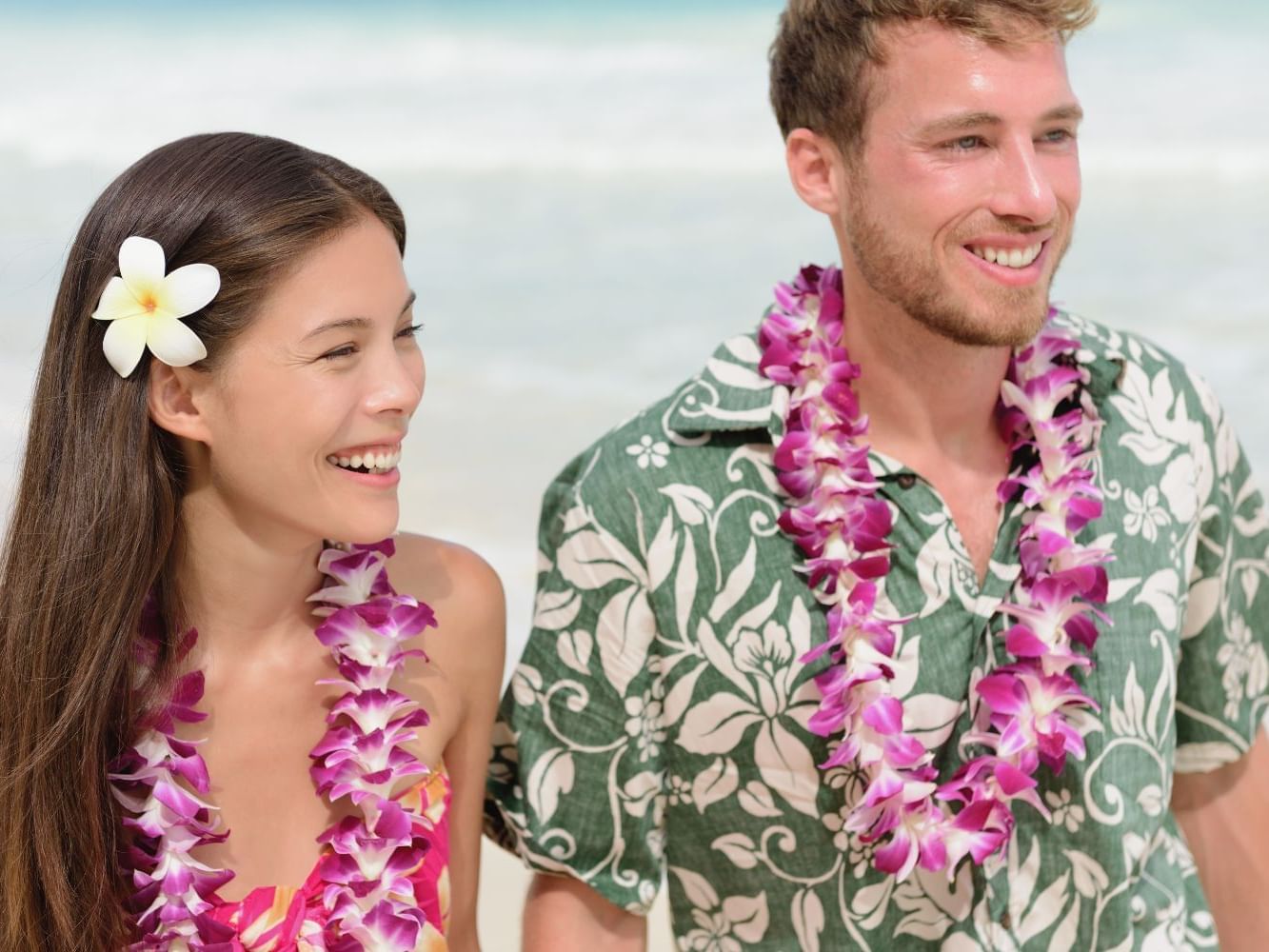The Essential Guide to Hawaiian Attire and Etiquette
From the iconic aloha shirts adorned with colorful floral prints to the fragrant leis that symbolize love and respect, Hawaiian attire is rich in history and cultural significance. Once you understand the origins and cultural meanings of why kamaʻāina (Hawaii locals) and kānaka maoli (Native Hawaiians) wear these quintessential wardrobe elements, you'll be equipped with the knowledge to do so respectfully and stylishly. Whether you're preparing for a trip to the Hawaiian islands or simply wish to infuse your wardrobe with a touch of tropical charm, knowing the tradition and proper etiquette of Hawaiian attire will help you wear each piece with confidence and cultural awareness.
3 Quintessential Pieces of a Hawaiian Wardrobe
Hawaiian design influences can be seen in everything from resort wear to professional office wardrobes, and it's the perfect way to bring a touch of Oahu home with you after your vacation.
1. Aloha shirts and mu'umu'us
The aloha shirt first rose to prominence in the early 1900s and became truly ubiquitous by the 1960s. Meanwhile, the muʻumuʻu predates the aloha shirt. In the 1800s, Native Hawaiian women who converted to Christianity adopted the missionary women's long skirts, but with a decidedly Hawaiian flair.
How to wear aloha shirts and mu'umu'us:
- Occasions and settings: Both are appropriate for many events, but they might not be suitable for very formal events like weddings (unless specified) or somber occasions like funerals. In Hawaii, it’s common to wear them to the office, church, and social gatherings.
- Patterns and prints: For casual wear, opt for bright, bold prints. For more formal occasions or business settings, choose shirts with subdued colors and patterns.
- Tucked vs. untucked: Typically, Aloha shirts are worn untucked. This style reflects the relaxed Hawaiian lifestyle and allows the shirt’s patterns to be fully displayed. However, in business settings, it’s acceptable to tuck the shirt in.
- Respecting the culture: Wearing aloha shirts and mu'umu'us should be done with respect to Hawaiian culture. Avoid wearing it as a costume or in a mocking manner. Appreciate the craftsmanship and cultural significance behind the designs.
- Authenticity: Purchase Aloha shirts from local Hawaiian brands or artisans to support the local economy and ensure you're wearing an authentic piece of Hawaiian culture. Authentic brands include Kahala and Reyn Spooner (look for a "Made in Hawaii" label)
2. Flower leis
Flower garlands (lei) go back to the era of the early Polynesians where they were made using flowers, leaves, and shells as well as feathers, and even animal bone and teeth. Today, it continues to be a symbol of aloha, used to commemorate important events, such as your arrival to Hawaii (many hotels will offer you a lei when you check in) or big life moments like graduations or weddings.
Unlike aloha wear, there are far fewer rules about lei etiquette:
- Occasions and settings: You can wear them anytime. There doesn't even need to be a special occasion — you can pick one up from a local vendor or store and wear it "just because" whenever you feel like it!
- Style and design: Lei made from nuts, seashells, or seeds are often considered more formal, but both flower and nut lei can level up your wardrobe. Wear a lei draped over both your front and back, or wrapped around a hat.
- Unspoken rules: You're not supposed to reject a lei if it's offered to you, as the person giving it to you is sharing their own aloha spirit with you. Similarly, you shouldn't remove or discard a lei in front of the person who gave it to you. Finally, many locals wait until a flower lei has wilted or dried before discarding it.
3. Hawaiian slippers
While flip-flops and sandals date back thousands of years, the Hawaiian slipper (or what locals call "slippahs" in pidgin) emerged in the 1930s. While they're ubiquitous across the Aloha State, they're decidedly casual wear:
- Occasions and settings: Slippers are appropriate for most casual settings, such as beach outings, barbecues, visiting local shops, and informal gatherings. Avoid wearing slippers to formal events, business meetings, or upscale restaurants (although they're perfectly appropriate for hitting up a happy hour or lanai at Waikiki's best bars). Opt for more formal footwear in these settings.
- Unspoken rules: It's common for locals to remove their slippers before entering someone's home as a sign of respect and to keep the house clean. Look for designated areas to leave your slippers outside.
- Authenticity: Scott Hawaii is a well-known brand that some claim created the original Hawaiian slippers. Locals and Olukai are two other brands known for their affordability, classic designs, and cultural roots.
The Waikiki Resort Hotel Is Just Steps From the Best Shops For Local Attire
The Waikiki Resort Hotel is centrally located near all of the best sights and sounds of Waikiki, including local artisans, markets, and shops where you can buy authentic Hawaiian shirts, fragrant floral leis, and popular slippers. And what better way to sport your new Hawaiian wardrobe than by enjoying our world-class amenities and experiences — including free hula classes and ukulele lessons — where you can sport your new Hawaiian wardrobe? Book your stay at the Waikiki Resort Hotel online or call us at 1-800-367-5116 to see why our location, friendly staff, convenience, and amenities give us top ratings among our guests.

